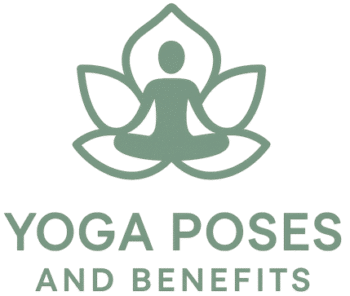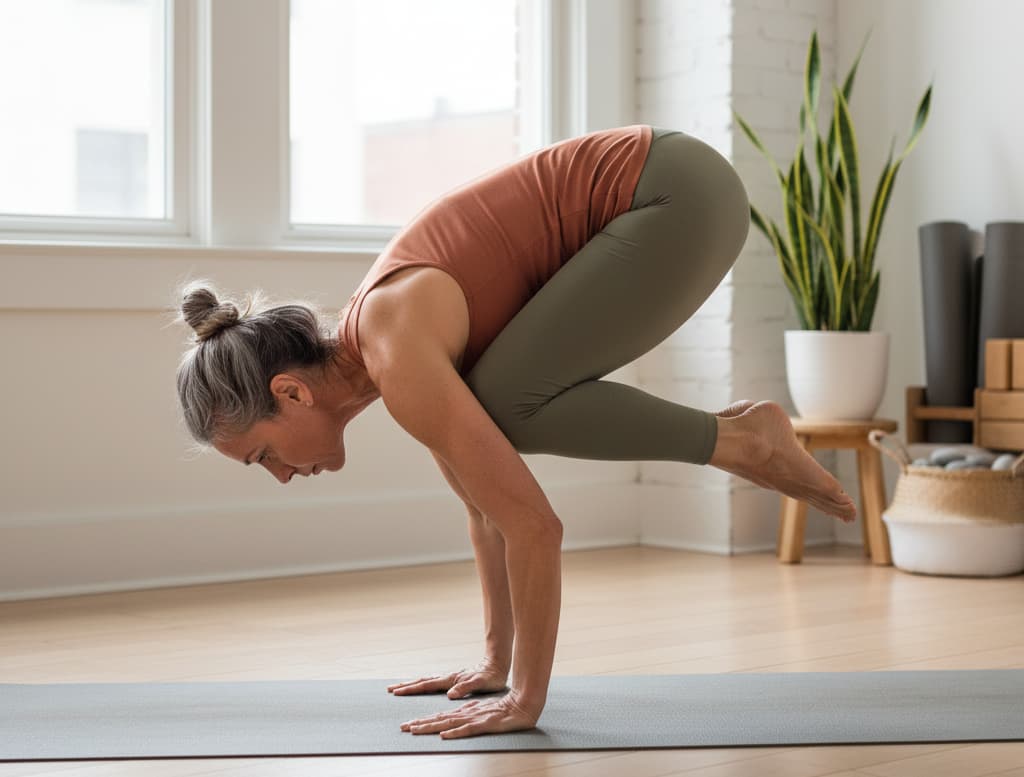Crow Pose in yoga, or Bakasana, is often the first arm balance that students encounter in their yoga journey. This dynamic pose requires focus, strength, and patience, while teaching invaluable lessons about stability, courage, and the mind-body connection. By grounding your palms, hugging your knees wide against your arms, and shifting your weight forward, you begin to explore one of the most iconic yoga poses that blends physical challenge with mindful awareness.
What Is Crow Pose in Yoga?
In Sanskrit, Crow Pose is called Bakasana. It is sometimes used interchangeably with Crane Pose (Kakasana), though traditionally, Crane Pose involves straighter arms while Crow Pose keeps a deeper bend in the elbows. Both poses are part of the broader family of arm balances in yoga and serve as gateways to more advanced transitions.
Crow Pose strengthens the triceps, core, and shoulders, while improving balance and stability. It also trains focus, as your gaze (drishti) and breath are essential to finding flight.
Other Names for Crow Yoga Pose
Crow Pose is known by different names in various yoga traditions:
- Bakasana (Sanskrit): The formal Sanskrit name for Crow Pose.
- Crane Pose: While some use the terms interchangeably, Crane Pose may involve straightening the arms.
How to do Crow Pose in Yoga
How to Practice Crow Pose Step by Step
Follow these instructions to safely explore Crow Pose in your practice:
- Warm-Up – Prepare the body with wrist stretches, hip openers, and core activation.
- Starting Position – Begin in a squat with your knees wide and your feet close together on the floor.
- Hand Placement – Spread your hands shoulder-width apart, pressing palms into the mat for grounding.
- Knees and Elbows – Place your knees on the backs of your upper arms near the triceps, keeping your elbows slightly bent.
- Shift Forward – Lean your body weight gradually into your hands, moving your chest forward rather than down.
- Lift Off – Pick up one foot, then the other, until both toes are off the floor.
- Balance and Hold – Hug everything into the midline for stability, breathe deeply, and focus your gaze slightly forward.
- Exit with Control – Slowly lower your feet back to the mat and return to a squat.
Muscles Worked in Crow Pose
Crow Pose is a full-body workout in disguise. Key muscle groups include:
- Triceps and shoulders: support the arms in the arm balance.
- Core muscles: stabilize the body as you lift your feet.
- Hip flexors: draw the thighs toward the chest.
- Back muscles: lengthen the spine and maintain balance.
Variations of Crow Yoga Pose
There are many ways to explore and deepen your Crow Pose practice:
- Side Crow (Parsva Bakasana) – A twisting arm balance that strengthens the obliques while keeping one set of knees stacked.
- Reclined Crow Pose – A supine variation practiced on the floor, helping beginners feel the alignment without bearing full weight on the hands.
- Straight-Arm Crow / Crane Pose – Similar to Kakasana, this version keeps the arms straight, increasing the challenge and demand on the triceps.
- Two-to-One Transition – Shift from two bent arms to balancing more weight on one arm for advanced control.
- Crow to Headstand or Chaturanga – Transitioning smoothly between poses builds strength, coordination, and flow in a vinyasa class.
Modifications for Crow Yoga Pose: How to Use Props
Not everyone finds flight on the first try, and that’s where props and modifications help build confidence:
- Yoga block under the feet – Provides extra height to make lift-off easier.
- Blanket or bolster under the face – Offers a softer landing in case of a fall.
- Wall support – Practice near a wall to prevent tipping forward.
- Knees on arms, feet on floor – Hold this partial variation to build comfort with the shape before attempting to balance.
These supportive options make Crow Pose in yoga more accessible to beginners while reinforcing safe technique.
Contraindications for Crow Pose in Yoga
While generally safe for most practitioners, individuals with the following conditions should approach Crow Pose cautiously:
- Wrist or Shoulder Injuries: Modify the pose to avoid strain on injured wrists or shoulders.
- Pregnancy: Pregnant individuals may want to avoid Crow Pose due to the pressure on the abdomen.
Tips to Improve Crow Yoga Pose in Your Practice
- Build Core Strength: Strengthen your core with specific exercises to provide stability during arm balances.
- Practice Regularly: Consistent practice is key. Set aside time to work on Crow Pose regularly.
- Focus on Breath: Maintain steady and controlled breathing to enhance concentration and balance.
Mental and Emotional Benefits of Crow Pose in Your Practice?
Beyond physical strength, Crow Pose cultivates emotional resilience. Attempting this pose teaches patience, courage, and focus. By consistently working toward balance, you learn to approach challenges off the mat with greater confidence. The practice also helps quiet self-doubt, as each attempt—whether you keep one foot on the floor or fully lift—is progress.
Is Crow Pose a Suitable Arm Balance for Beginners?
While challenging, Crow Pose is accessible to beginners with the right guidance and modifications.
Is Crow Yoga Pose Suitable for Beginners and Advanced Practitioners?
Advanced practitioners can explore variations and transitions, such as moving into other arm balances from Crow Pose.
How Does Crow Pose Contribute to a Yoga Sequence or Flow?
Crow Pose seamlessly integrates into a yoga sequence:
- Warm-up: Use Crow Pose as part of your warm-up to activate core muscles and build strength.
- Transitions: Transition into Crow Pose from poses like Downward Dog or Chaturanga, adding fluidity to your practice.
How Can I Deepen My Practice in Crow Pose?
Deepening your practice in Crow Pose involves:
To progress in your practice, try these strategies:
- Build stability – Focus on longer holds for five to ten breaths.
- Strengthen transitions – Flow from Crow Pose into Chaturanga, or jump back for added challenge.
- Explore arm balances – Use Crow as a gateway to more advanced arm balances like Firefly (Tittibhasana) or Eight-Angle Pose (Astavakrasana).
- Consistency – Practicing a little every day yields faster results than forcing progress in one session.
Common Mistakes in Teaching Crow Yoga Pose
Avoid these common teaching mistakes when guiding students in Crow Pose:
- Neglecting Warm-up: Ensure students engage in a thorough warm-up to prepare wrists, shoulders, and core muscles.
- Overlooking Modifications: Emphasize the importance of modifications, particularly for beginners.
- Collapsing elbows – Keep elbows actively pressing in to maintain stability.
- Looking down – Instead, keep your gaze forward to avoid tipping.
- Neglecting core engagement – Without core activation, the body feels heavy and harder to lift.
Among the many yoga poses, Crow Pose is a symbolic leap toward trust and transformation. It represents taking flight, learning to balance weight, and finding freedom beyond fear. Whether you’re working with yoga blocks, refining transitions, or experimenting with Crane Pose, the journey is just as meaningful as the destination.
With steady practice, grounded palms, and mindful balance, you’ll discover that Crow Pose is not just about lifting your feet off the floor, but about cultivating stability, focus, and inner strength.
What is crow pose good for?
Crow pose is good for building upper body strength, improving balance, and enhancing core stability. As a foundational arm balance in yoga, it engages muscles in the shoulders, arms, and abdominals. Regularly practicing crow pose helps prepare for advanced postures like handstand and strengthens concentration and body awareness.
Why is the crow pose so difficult?
The crow pose is difficult because it requires a combination of core strength, arm balance, and wrist flexibility. Also known as Bakasana in yoga, this pose challenges the body’s alignment and engages stabilizing muscles used in advanced yoga practices like Vinyasa and Ashtanga.
What are common mistakes in crow pose?
Common mistakes in crow pose include placing the hands too close together, failing to engage the core muscles, and looking forward instead of down, which affects balance. Misalignment in the wrists and elbows can also prevent proper weight distribution. Tools like yoga blocks and guided instruction from a certified yoga teacher can help improve form.
How long should you stay in a crow pose?
You should stay in crow pose (Bakasana) for 5 to 10 breaths or up to 30 seconds, depending on your strength and balance. This foundational arm balance in yoga engages the core, wrists, and shoulders. Using a yoga mat and proper alignment enhances safety and stability.
What level of yoga is the crow pose?
The crow pose, also known as Bakasana, is generally classified as an intermediate-level yoga pose. It requires core strength, balance, and wrist stability to support the body’s weight. Common in Vinyasa and Ashtanga yoga sequences, crow pose helps build the foundation for more advanced arm balances like handstands.

